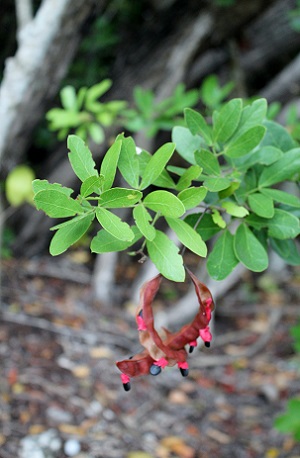
Copyright by: George D. Gann, 2013
In habitat, Everglades National Park, Key Largo, Florida
Family: Fabaceae
Group: Dicot
Substrate:
Terrestrial
Habit:
Shrub
Perennation:
Perennial
Native Range: South Florida, the West Indies (Cuba, Bahamas), Mexico (Yucatan peninsula) and Central America (Belize).
Map of select IRC data for peninsular Florida
State of Florida Status:
Threatened
IRC SOUTH FLORIDA Status:
Secure
SOUTH FLORIDA Occurrence:
Present
SOUTH FLORIDA Native Status:
Native
SOUTH FLORIDA Cultivated Status:
Cultivated
Comments: Visit our
Natives For Your Neighborhood website for more information and images.
Synonyms: P. guadalupense.
